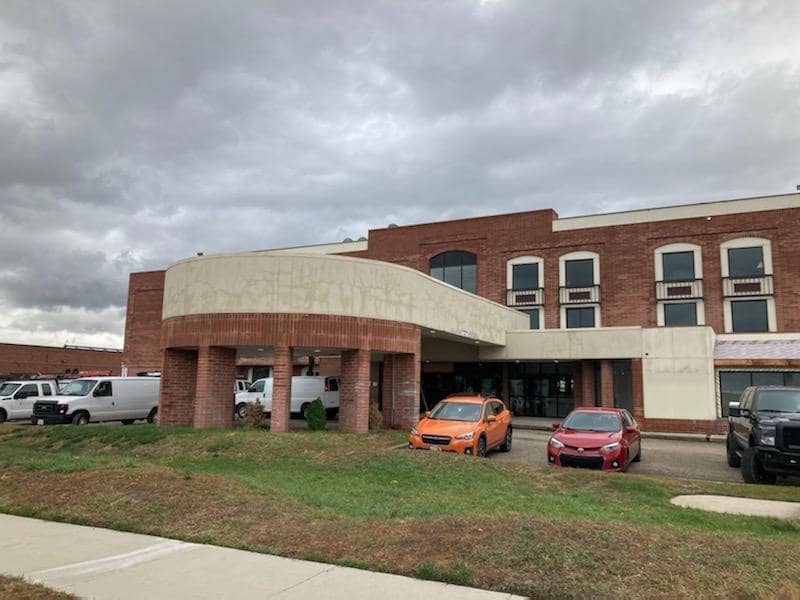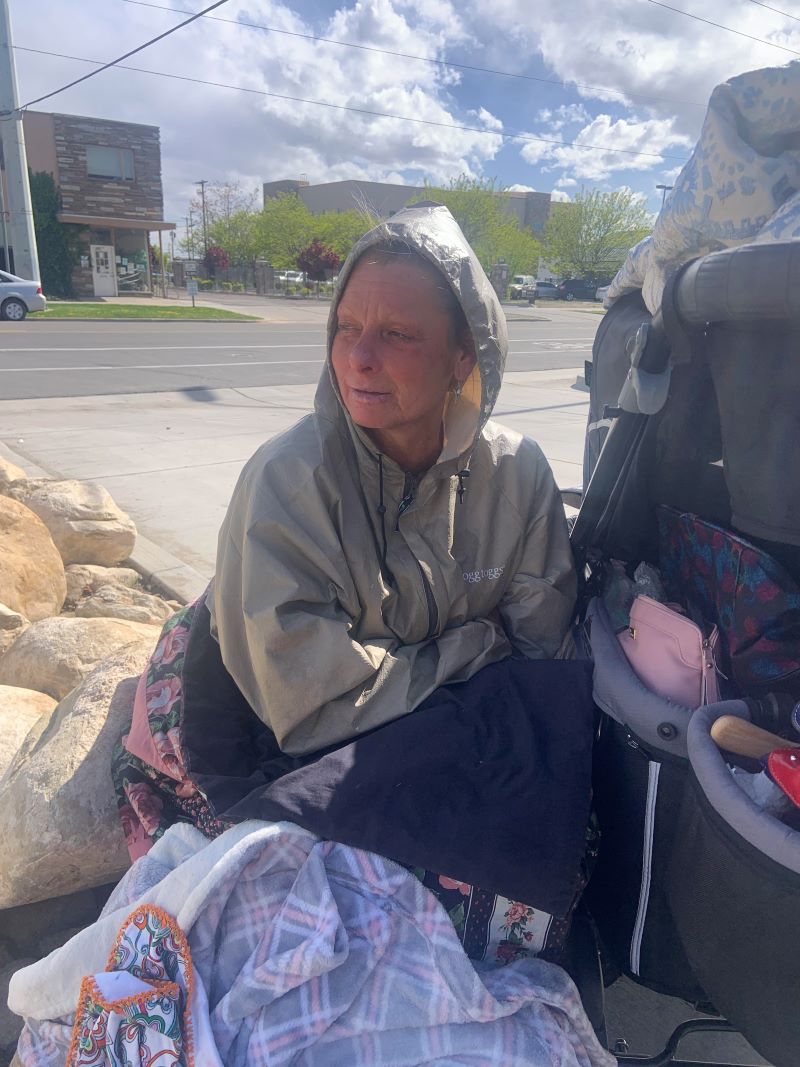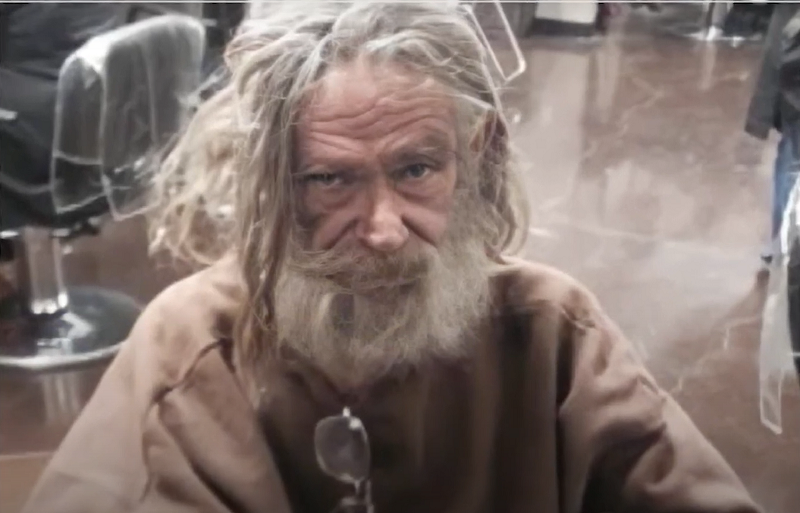A Switchpoint for Better Homeless Care
Why Carol Hollowell is determined to reduce the homeless population problem in Utah by offering more trust and compassion in exchange for requiring that tenants work.
Carol Hollowell tells Utah Stories, “One day I saw this man in a wheelchair, and I stopped and I decided to ask him, “Why are you homeless? Why don’t you tell me your story?”
Ray had lost his wallet five years earlier due to a burglary. Hollowell learned that Ray had also suffered from a traumatic brain injury and he couldn’t process some of those basic problem-solving skills necessary to get a new ID. But he was able to survive on the streets because he still had his debit card that had his disability funds. But without an ID, he couldn’t get into any type of housing, Hollowell learned.
Hollowell decided to take on Ray’s case, telling him, “I’m going to get you housed, and I’m going to solve your problem, today.” Ray was able to get housed within seven hours and even get a haircut and his long gnarly nails trimmed within that time. “Ray stayed successfully housed,” says Hollowell, until he passed away from Covid two years ago.

In 2014 Hollowell started a new housing program called Switchpoint operating under the theory “If you can stop and meet an individual where they are at and figure out what are the barriers that have kept them homeless, then you can get them off the streets.” But this solution requires the basic component of compassion. Something that has been lacking in Salt Lake City’s current policy of abatements using Police and bulldozers to move the homeless. And under the current resource center model which requires heavy security and scanners because leaders believe that these components are required. Hollowell disagrees.
Hollowell says that if you met Ray and never learned his story, one might assume that he just wants to be homeless. He had been arrested 63 times for the same thing of public intoxication and sleeping behind the library. “But nobody asked him (or bothered to find out) —Why?”
Based on this effort in finding out why Ray was homeless, Hollowell found that there was something fundamentally missing from the current homeless and housing model and she made it her purpose to change things. Switchpoint was based on the idea of using counselors to figure out an action plan to get individuals into stable housing.
“One of the things that really hit me is that I want my residents to feel like they have dignity and they have value”, shares Hollowell. One major component to Switchpoint’s model, which numerous unsheltered individuals have told Utah Stories is the reason why they will not stay in the current homeless resource centers– is the absence of security checks upon arrival. “And I just don’t feel like they are safe.” Jamie Draper told Utah Stories who have been camping along the Jordan River for the past four years.
Switchpoint has done away with searching everyone when they come in. In exchange for offering their tenants, more dignity Switchpoint expects more out of their tenants. Everyone at their residence is expected to have a job. If they are unable to get a job in the outside world due to some disability, psychological issue, or getting over an addiction, they are assigned a job within the facility. “Everybody works” is the model, and that way “everyone takes ownership over the facility.” “You are not going to get kicked out, but you need to meet with a case manager every week to develop an action plan,” explains Hollowell.
Hollowell says that it is a top priority at Switchpoint for residents to be given both some dignity and value and that searches don’t correspond to those priorities. “If I were living at an apartment complex, I wouldn’t want that. We keep things safe but we treat them like they are a paying client.” Hollowell adds, “Because we expect more out of them, we see them step up to the plate over and over again.”
This model is a stark contrast to how the current homeless resource centers are operated in downtown Salt Lake City.

Observing The Geraldine E. King Women’s Resource Center
Three months ago Utah Stories visited the Geraldine E. King Women’s Resource Center in downtown Salt Lake City. In prior observations, we witnessed a growing number of campers outside of the facility staying on the grass in mediums both in front of the facility and across the street. We decided to interview these people. What we discovered was shocking. There were clearly many psychologically disturbed women outside ranting profanities, who were in constant altercations. One woman accused the shelter of all sorts of terrible things and said they operate it “like a prison”. Many unsheltered homeless keep repeating that they feel like prisoners at the resource centers.
Media is not allowed into the facilities to see how things are operated. We respect the social workers and staff at the Resource Centers, but many homeless people have told us that they do not feel safe at the shelter. Stacy Johnson, who is the unofficial Mayor of the unsheltered homeless camps in downtown Salt Lake City, told us that she had her face bitten several times by a woman who was psychologically disturbed and that she did not feel safe at the shelter. The Woman’s and Men’s shelters are both currently full. And the resource centers also offer free showers so several women told us that while they won’t sleep at the shelters they come to get showers regularly. So the question comes down to: why aren’t these psychologically ill women in mental institutions? Hollowell says, “There is no room. We don’t have enough facilities being built.”

The Mental Health Crisis in Utah
There is currently a push by Intermountain Hospital and The Huntsman Mental Health Program, but Hollowell says, “There is a mental health crisis for sure.” And how do you deal with that? When you have a lot of different types in a shelter. When you have one person taking 90% of the energy, are you are trying to deal with 300 people in a shelter?”
We do have a mental health crisis on our hands and more importantly, we have a housing crisis. “We have seen a 53% increase in our senior homelessness this year.” We are seeing that here in Utah. The biggest population of our homeless is seniors, because they can’t afford to live anywhere and because they are on a fixed income. And they are getting forced into homelessness when they have never been in a shelter before.
We have people who are 92 or 88 years old and now they are priced out of the market. We have to find a way right now to do at least 1,000 units here in Salt Lake County and 1,000 units in Washington County because that is the number sitting there right now. We pulled a number through the state’s homeless information system HENIS, and it was 653 homeless seniors who are over the age of 65 today.
If we took that number knowing that they can afford somewhere around the $450-$500 today, think about what we could do to our homeless system. Because now we would be taking them out of the system and now you are putting them somewhere that is safe and is theirs and that is private. They now have dignity and value.
Utah’s Developer/ Politicians
We are battling zoning problems constantly. If you don’t want them camping on the street, then we need to create deeply affordable housing which involves changing zoning laws. If you are 75 years old, you are not going to survive the winter. “You have to do a big push in the legislation. We have to change the zoning and we have to create deeply affordable housing, which remains deeply affordable.
The cost of incarceration and the cost of emergency rooms for the homeless are significant. “Who becomes the primary care physician for the homeless? It’s our emergency rooms.”, states Hollowell. “We have 120 seniors who are living at the Point”, a hotel near the airport repurposed for helping the homeless where a doctor comes and checks on tenants once a month.
RELATED CONTENT
Salt Lake City’s Homeless Abatement Policies Examined
Investigating Homelessness Death and Public Safety in Utah
New York Times Journalist Appalled by the Homeless Situation in Salt Lake
Local and Mixed-Use Superior to Corporate Big Box Zoning
SUPPORT LOCAL JOURNALISM AND SUBSCRIBE TO PRINT MAGAZINE
Subscribe to Utah Stories weekly newsletter and get our stories directly to your inbox





